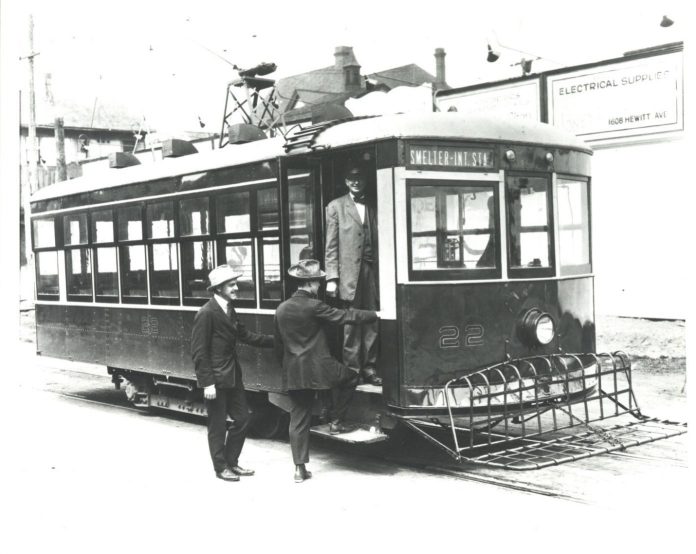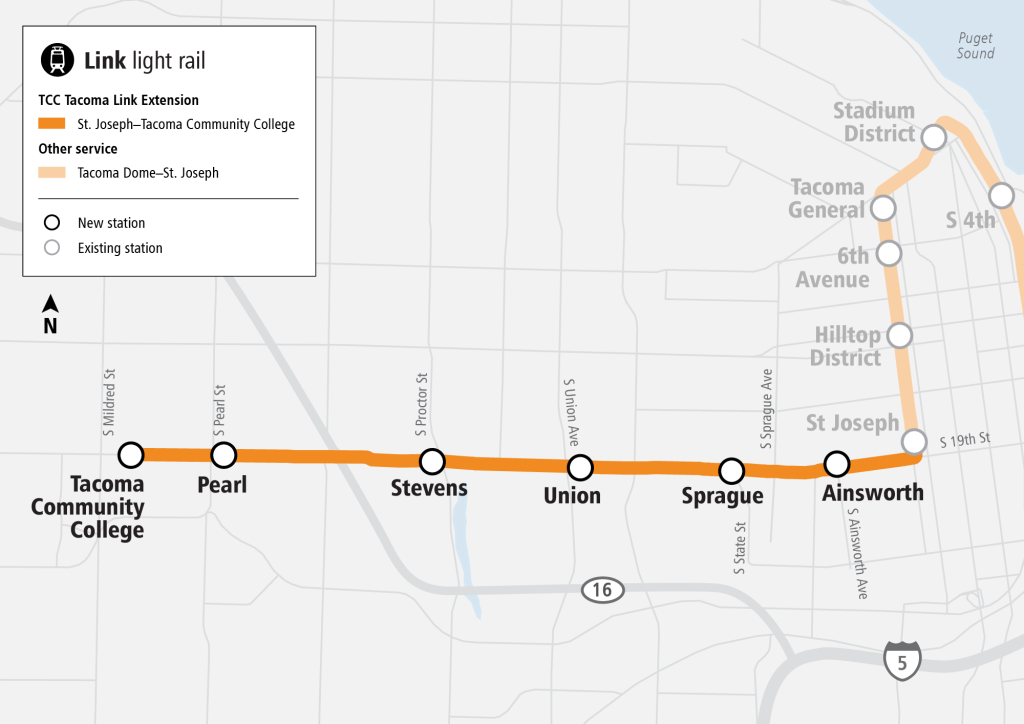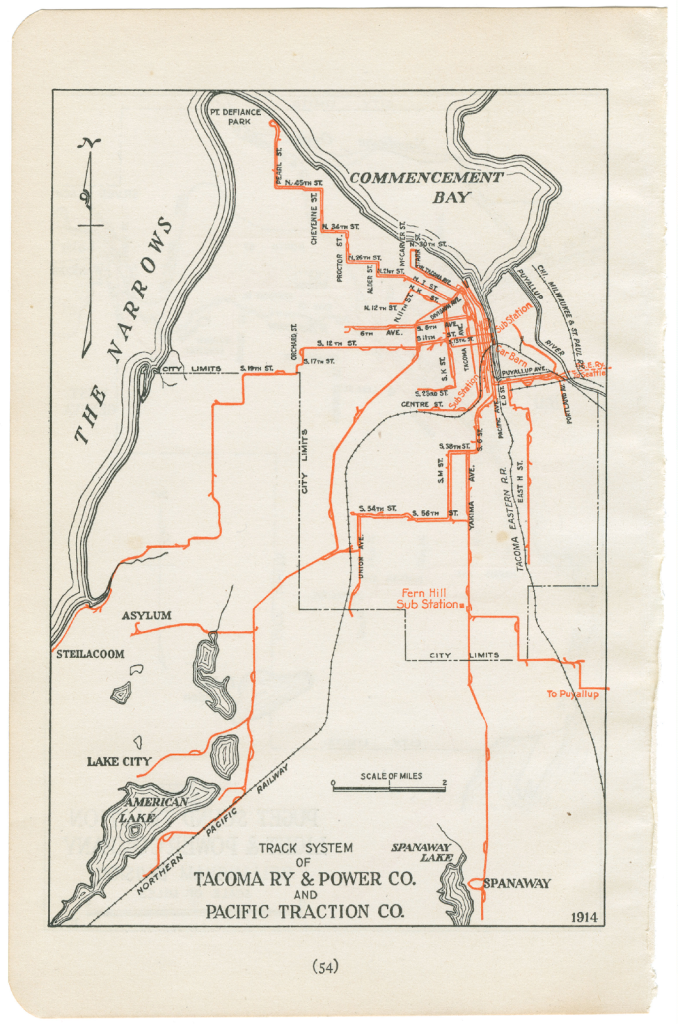
With the six-month anniversary of the Hilltop extension of Tacoma’s T Line streetcar, there is much to reflect on in the few months since the opening. The T Line (then known as Tacoma Link) began service 20 years ago. With the addition of seven new stops, the T Line has seen a jump in ridership since its opening in September of last year, with ridership hitting new highs based on Sound Transit’s ridership dashboard.
With Sound Transit planning on continuing the extension westward toward Tacoma Community College on 19th Avenue, it might be a good idea to consider what was and what could be in a renewed vision of public transit in Tacoma. While perhaps there is little to be done yearning for the past, there is certainly something to consider: Greater Tacoma used to have an enormously expansive streetcar network.

As Rubén Casas explored for The Urbanist, the Tacoma Railway went under due to the expansion and use of cars in the 1930s. With the rise of the automobile, the use of the streetcar as a mode of transportation dwindled in popularity. The first streetcar lines were constructed in 1888, and by 1890 expanded from downtown Tacoma to Steilacoom. The last streetcar ran until April of 1938, and in 1939 Tacoma Railway & Power Company fully transitioned from streetcars to buses as the mode of mass transit.
The expansive nature of the Tacoma Railway’s system was the reach that was afforded to all. Someone from Spanaway could hop onto a streetcar and take it up to the Pagoda in Point Defiance for a day outing at Owen Beach. The convenience of streetcars to Point Defiance Park allowed people without automobiles the same luxury of enjoying a scenic route to the park, without the trouble of traffic. But as the use of cars increased, so too did congestion.


However, this map of the past serves as not only a reminder of what was, but to learn and refine the system. With the planned expansion to Tacoma Community College, there is a chance that it could extend beyond that, the roads meant for both cars and rails. What in the pre-car-dominated era used to be a densely interlocked network is now just a single line, albeit not the straightest one as it switchbacks up the hill and doglegs over to Stadium District. We could rebuild the dense frequent transit network that Tacoma was built on.


The students of University of Washington, Tacoma, are constantly reminded of this past. Rails cut through the campus, grass springing up around their steel lines. What was the specter of the Pacific Avenue streetcars has now been replaced by the T Lines, taking them to the Tacoma Dome Station or up to Hilltop.



The expanse of the old Tacoma Railway is something to aspire to. Bringing that affordable connectivity and mass transit to the subregion would foster new economic growth through commuters and negate some of the traffic stalls on I-5 or avenues. Creating not only ease against the backdrop of an overreliance on cars to get around Tacoma, but it also creates new means of jobs, community investment, and security. Sound Transit expansion of the T Line ought to be applauded and encouraged! But let’s not take another 20 years for the next extension.

Collin Thrower
Collin Rhys Thrower has long had an interest in policy issues that affect lives – whether it is healthcare, welfare, civil rights, or democracy itself. He sees politics as a puzzle, trying to solve systemic problems that have the chance to either do great good in the world or enact great harm. Born and raised in San José, California, Collin has a thirst for knowledge, learning, and growing in new spaces. Residing in Tacoma, Collin has a Master's in Political Science from Northeastern University.


